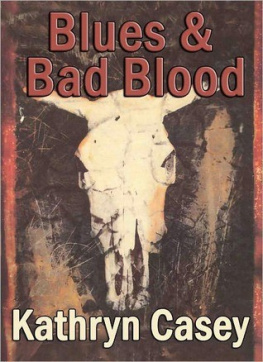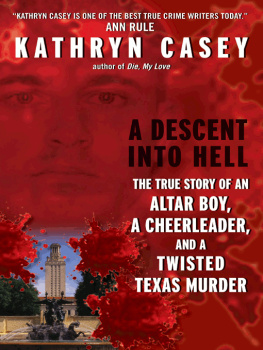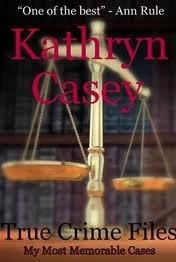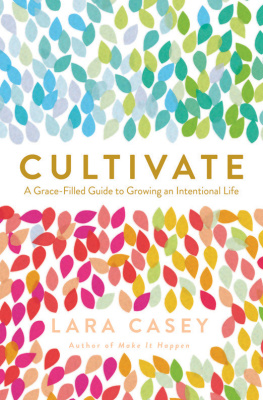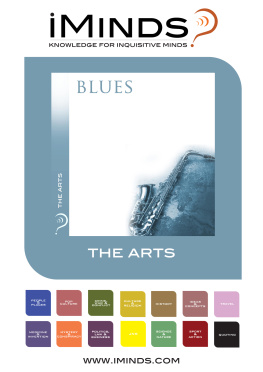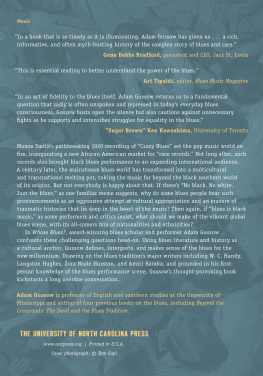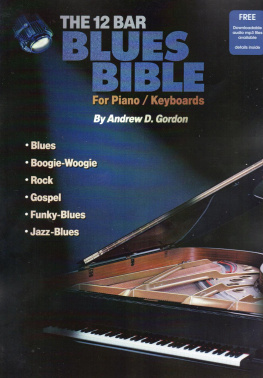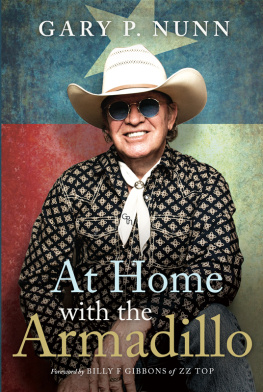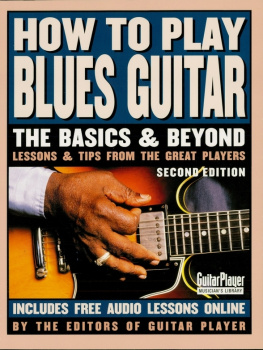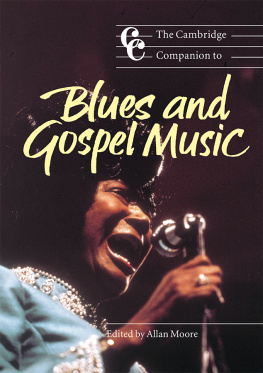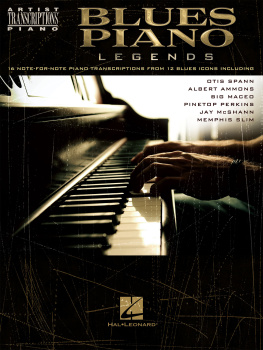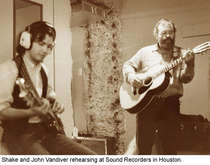
THE BLUES AND BAD BLOOD
By Kathryn Casey
Copyright 2011: Kathryn Casey
All Rights Reserved
Cover by Connie Choate
Dear Reader: Many of you know me as a best-selling author of true crime and mystery books. For two decades, I wrote for magazines, often covering sensational murders. This piece is one of my favorites. It ran in Rolling Stone in March 1988, on the infamous murders of Texas blues singer John Vandiver and his lover, Debbie Davis. Ive updated the article at the end. The above photo, published by permission of Shake Russell, is of Shake and John Vandiver (on the right).
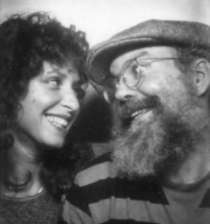
Photo: Debbie Davis and John Vandiver
Blues & Bad Blood
THE NIGHT OF FEBRUARY 22nd, 1985, was cold and crisp. The ranch in the pine forests of Magnolia, Texas, just forty miles north of Houston, was quiet. The horses were calm, the dogs silent. And the darkness, like a black satin comforter, concealed the horror inside the log cabin.
The television buzzed in the cabins main room, while five newborn dachshund puppies sucked greedily at their mothers nipples inside a playpen in the adjoining bedroom. It was a cluttered house. In the bookcases, there were playbills from shows in Florida, Colorado, and Texas announcing Tonight! John Vandiver! alongside snapshots of Vandiver and his longtime, live-in lover, Debbie Davis.
Hanging on the wall over the couch was a life-size portrait of John Vandiver, his face framed by an unruly gray beard, his eyes gleaming behind wire-rimmed glasses, one thick hand clutching a microphone to his open mouth, crying out in song. On the wooden floor below the portrait was Vandivers lifeless, stocky body. Clothed only in an old blue robe and Jockey shorts, he was face down and encircled by blood. A few inches from his outstretched hand lay his broken glasses.
Across the room, Davis lay on her back, her bare legs extended upward and bent. She had toppled from her knees when the gunshots tore through her chest and neck. A thin line of blood beaded up from a slash across her throat. A translucent blue negligee was wrapped tightly around her upper body.
Miles away a maroon minivan barreled down a desolate country road. Inside the four occupants were tense and silent, except for the driver, Tom Mathes. He was muttering and laughing to himself. You better get your money to me, Tom, or something might happen to you, he said, mimicking the man how lying dead on the cabin floor. Well, I got him. Hes the one whos dead now.
Four months earlier in the Wunsche Brothers Caf and Saloon in Spring, Texas, there had been a reunion of the Ewing Street Times, a popular regional group that had disbanded nine years earlier. The smoky saloon pulsated with the heavy chords of country blues and the lighter strains of country rock. A congregation of the faithful filled the tables and the bar.
At center stage, John Vandiver dug deeply into the thick, low tones of the early blues he loved. His strong hands, callused from years of work on his ranch, picked authoritatively at the strings of an old Gibson F-hole guitar, which, singer B.W. Stevenson says, Johnny could make sound real funky. With his old friends Shake Russell, the whiskey-voiced Texas country rocker, and the bass player Michael Mashkes, a.k.a. Marcello Marconi, Vandiver joined in on songs he used to perform nightly in the Seventies.
John Vandiver spent twenty of his thirty-nine years playing on the Texas music circuit. He was one of those musicians who were always poised on the brink of success but who never quite made it. There were people of much greater success who considered Johnny their peer, says folk star David Bromberg, whos recorded with the likes of Ringo Starr and Bob Dylan. Bromberg would occasionally play with Vandiver when he was in Texas. I myself was very happy to be known as Johnny Vandivers guitar player.
Over the years, Vandiver had played beside the hierarchy of Texas good-time music, including Jerry Jeff Walker and Michael Martin Murphey. He made local television appearances and recorded with Shake Russell and his country-rock band. Vandivers music hadnt made him rich, but he seemed content. Besides, there were other ways to make money.
At the end of the performance, Vandiver swept his gray flannel racing cap off his head and bowed to the crowd. Out of the caps crown flew two tightly twisted joints, which he scrambled to recover. Standing upright again, Vandiver looked around the room, smiled sheepishly and said, Hell, you people probably already knew that about me.
The crowd roared with friendly recognition.
Vandivers musical career began in the Sixties, when music was intertwined with love, peace, and drugs. His career continued through the Seventies the heyday of Texas music and into the leaner, cocaine-fueled Eighties. While friends and fellow musicians like Bromberg and Walker had gone on to national prominence, Vandiver remained a local star. But he found a way to supplement his modest musical income. In his final days, Vandiver was playing two circuits: the Texas bars and music halls and the drug route from Florida to Colorado.
JOHN VANDIVER GREW UP IN DALLAS, IN A DEVOUT Church of Christ family. After high school he attended Fort Worth Christian College for two years and then transferred to Oklahoma Christian College, in Oklahoma City, on a choir scholarship. He flunked out after only one semester because he spent most of his nights and weekends playing folk and blues in the local Okie bars.
He returned to Texas and joined his first group, a jug band called the Dallas County Outpatients, which also featured Michael Murphey and Steve Fromholz. By 1966, when Vandiver was twenty-one, he was playing solo in a small Dallas coffeehouse called the Rubaiyat. It was a breeding ground for musicians who would later become the vanguard of the "Austin sound' or the progressive country-rock movement of the Seventies. We were all about the same age and had a lot in common, says Fromholz. We loved good-time music and would play it anywhere, any time.
In May 1967, Vandiver and his wife, Diana, packed their belongings into a camper and left Texas for Coral Gables, Florida, where he had a gig at a coffeehouse called the Flick. Vandiver was the opening act, comedian Gabe Kaplan who later starred in Welcome Back, Kotter with John Travolta, was next on the bill, and the Ewing Street Times, with Michael Mashkes, a wiry, longhaired bass player from Chicago, closed the show. Vandiver would soon become the lead singer of the Times.
Living was easy in Coral Gables during those years. David Crosby, Joni Mitchell, Dion and John Sebastian congregated there, along with many of Vandivers Texas friends, including Walker and Murphey. Vandiver and his cronies would gather after a show for a night of partying at the house he shared with other band members and their families. "If I opened the refrigerator and found it filled with beer," says Mashkes, "I knew Jerry Jeff Walker was in town. Early one morning Murphey watched a woman through our window as she stumbled down the street, and then he wrote Drunken Lady of the Morning.
Vandiver bought into the whole scene; playing music and carousing filled his days and nights. His favorite song, Walker's "Gypsy Songman, glorified the traveling minstrel, the lone figure onstage, living on the edge of society, unrestricted by convention. Vandiver, who smoked pot daily, eventually began selling a little grass, enough to pay for his own supply.
Next page
